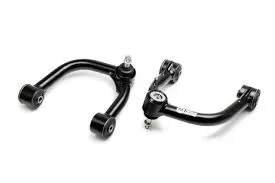car control arm replacement cost
Understanding the Cost of Car Control Arm Replacement
When it comes to vehicle maintenance, the control arm is a critical component that often goes unnoticed until a problem arises. The control arm, part of the vehicle's suspension system, connects the chassis to the wheels, allowing for smooth handling and stability while driving. Over time, factors such as wear and tear, road conditions, or even accidents can lead to the need for a replacement. Understanding the cost associated with control arm replacement can help car owners prepare for this necessary service.
Factors Influencing the Cost
The cost of replacing a control arm can vary significantly based on several factors. Firstly, the make and model of the vehicle play a significant role. Luxury vehicles or those with complex suspension systems may require more expensive parts and labor compared to standard models.
Another significant factor is the location of the repair shop. Labor rates can differ widely depending on geographic location. Urban areas generally have higher rates than rural ones. Additionally, whether you choose a dealership or an independent mechanic can influence the cost. Dealerships often charge a premium for their services but might offer specialized knowledge for certain vehicle brands.
Parts and Labor Costs
Typically, the cost of the control arm itself can range from $50 to $500, depending on the vehicle's specifications. Along with the control arm, additional parts such as bushings, nuts, and bolts may also be needed, potentially increasing costs further. On average, labor costs for control arm replacement can range from $100 to $200 per hour, with a complete replacement often requiring 2-3 hours of work.
car control arm replacement cost

When combining parts and labor, car owners can expect to pay anywhere from $300 to $1,200 for control arm replacement. It's essential to obtain a detailed quote that breaks down both parts and labor to understand the overall expenditure fully.
Signs That a Replacement is Needed
Being aware of the signs that indicate a failing control arm can save car owners from more expensive repairs down the line. Symptoms may include clunking noises when driving over bumps, uneven tire wear, poor handling, or an unaligned steering wheel. If any of these signs appear, it’s advisable to have the suspension system inspected by a qualified mechanic.
Preventive Measures
While control arm replacement can be costly, regular maintenance can help extend the life of suspension components. Regularly inspecting and aligning the vehicle helps maintain the integrity of the control arm. Additionally, avoiding potholes and rough driving conditions can also reduce wear on the suspension system.
Conclusion
In summary, the control arm is an essential part of a vehicle’s suspension system, and timely replacement is crucial for safe driving. Understanding the costs involved in replacing a control arm can empower car owners to make informed decisions and budget accordingly. Whether it’s ensuring that your vehicle remains in top shape or preparing for future repairs, staying proactive about maintenance and understanding costs can result in long-term savings and peace of mind on the road.









